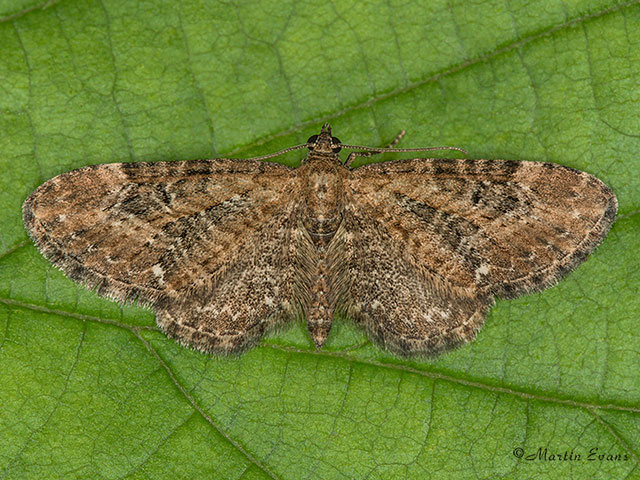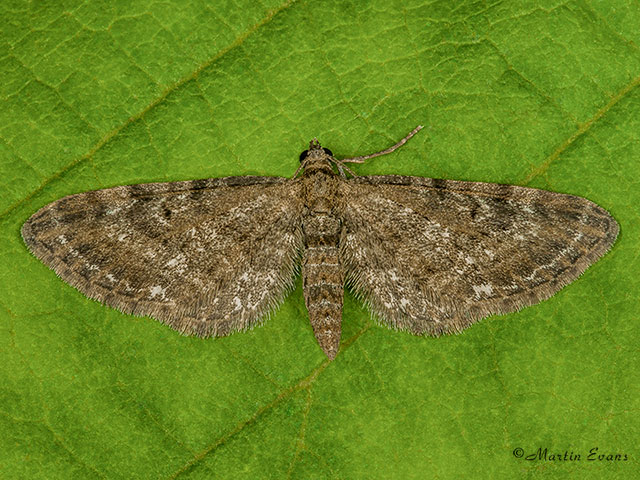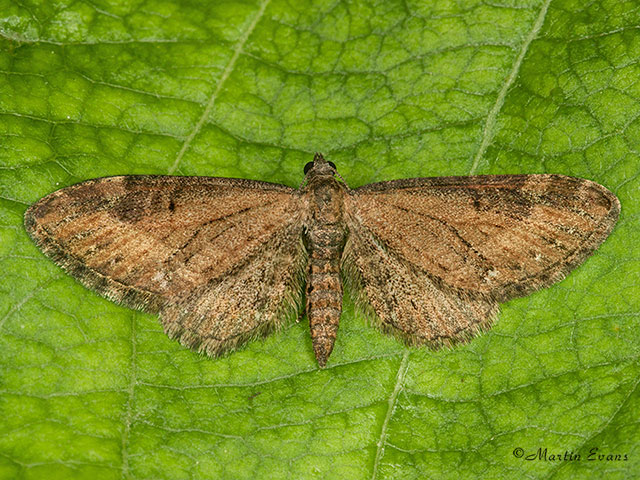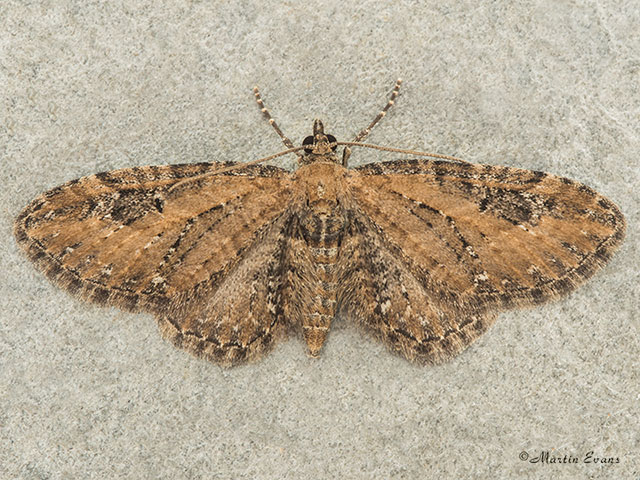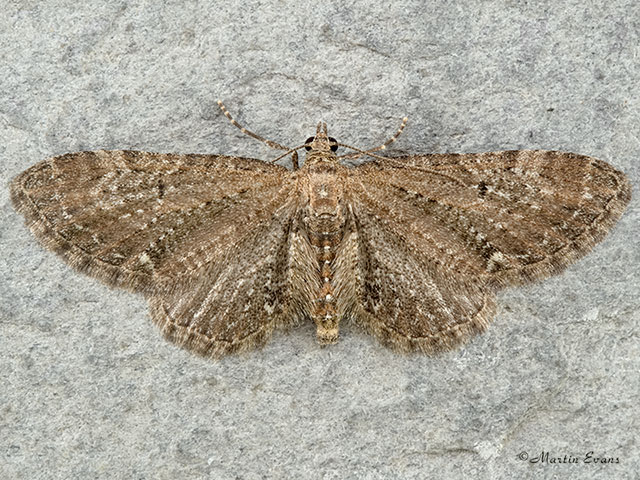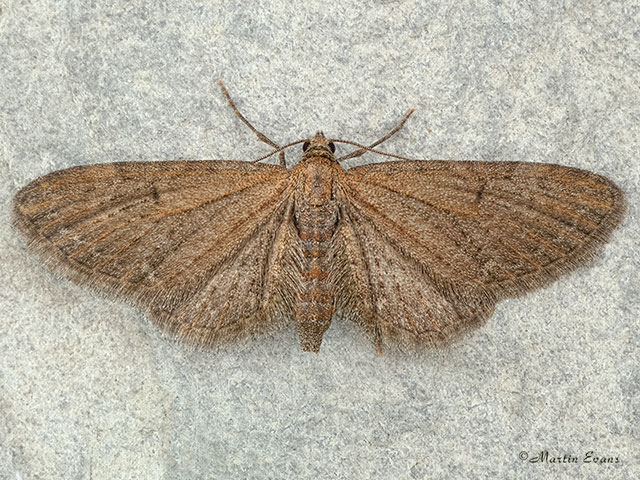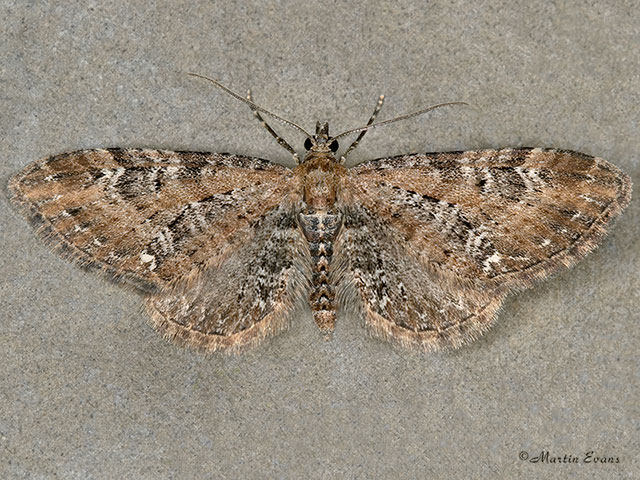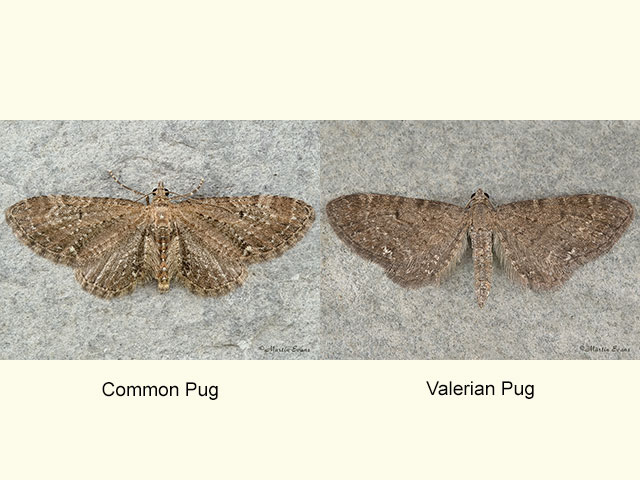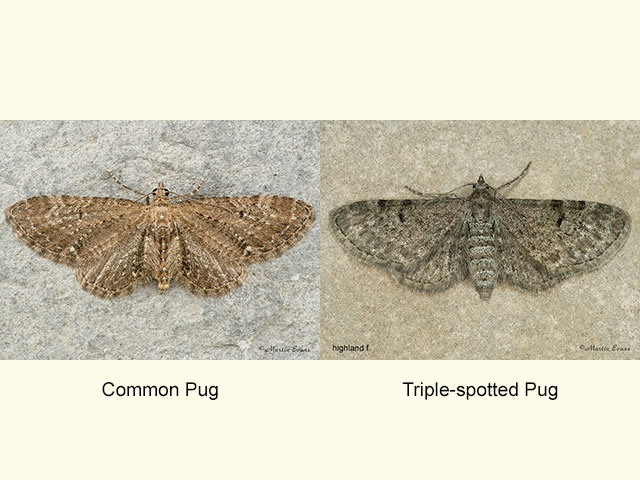Geometridae
70.183 Common Pug Eupithecia vulgata (Haworth, 1809)
Common
f. scotica Common in the north
f. clarensis Burren, Ireland
Similar species: The moth is variable enough to be mistaken for several other pugs, but useful for identification is the deeply indented outer edge of the cross-band where it meets the leading edge. e.g. Valerian Pug Eupithecia valerianata is smaller (8 to 10mm) with a greyer forewing and lacks the indented outer edge to the cross-band where it reaches the leading edge. The warm brown form of Campanula Pug Eupithecia denotata can be similar to the most plain form of Common Pug and this also has the deeply indented outer edge of the cross-band where it meets the leading edge, but Campanula Pug is on average larger (11 to 13mm) and has a more rounded forewing spot. In the case of worn specimens, melanic forms or if unsure of the identity, check the genitalia.
Forewing: 9 to 12mm
Habitats: Woodland, parkland, scrub, hedgerows, marshes, fens, moorland, heathland and gardens.
Habits: The moth flies from dusk and comes to light.
Foodplant: The larva feeds on the leaves of sallows, Bramble, Hawthorn and other trees and on the flowers and leaves of Yarrow, Bilberry, Common Ragwort, Hogweed and other low growing plants.
On the European mainland the larva has been recorded feeding on Field Wormwood, Goldenrod, bedstraws and bellflowers.
